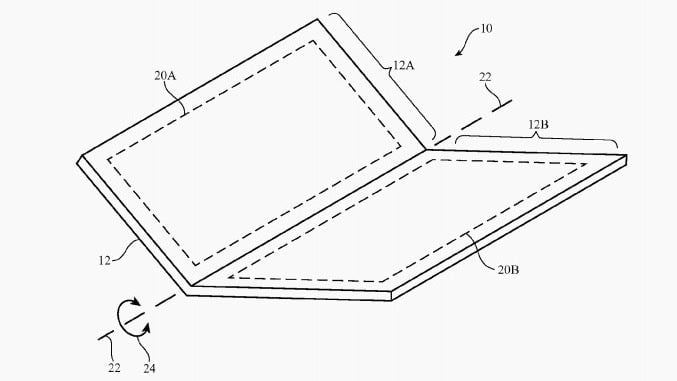Apple wants to reinvent the flip phone with a screen that literally folds in half
The 2000s aren’t back and neither is the flip phone—but a notebook-like version of it might be, courtesy of Apple.


The 2000s aren’t back and neither is the flip phone—but a notebook-like version of it might be, courtesy of Apple.
This week, Apple was granted its first patent for a foldable phone. The device would be made of conventional materials—glass, ceramic, fiber, aluminum, or plastic—but there’s a twist: “carbon nanotubes” would create a flexible seam running along the middle of the device, serving as a hinge.
The device would bend intentionally (unlike the iPhone 6 Plus #bendergate debacle), and have components malleable enough to not break or become damaged as the smartphone changes form.
The conductive carbon nanotubes would be enclosed between plastic polymer layers, and would be patterned to create signal paths so that they’d be useful beyond simply being flexible. The filing lists a variety of applications for the technology:
The carbon nanotube structures may be incorporated into signal cables such as flexible printed circuit cables, rigid printed circuit boards, printed circuits that include rigid portions with flexible tails (sometimes referred to as “rigid flex”), portions of display structures, portions of touch sensors such as capacitive touch sensor arrays for displays or track pads, camera structures, antenna structures, housing structures, internal device structures, electrical components, substrates, brackets, housing walls, other structures, or combinations of these structures.
Apple’s fascination with foldable phones dates back to 2013, when it filed a patent application for a flexible device, comprising of flexible screens, components, and batteries. The phone-maker revisited the idea of bendable screens in a 2014 hidden patent, which was filed in Europe under an Apple engineer’s name (instead of the company’s own). Neither of these have been approved yet.
The carbon nanotube patent application was originally filed in August 2014, and stayed under the radar until it was approved because Apple registered it under an engineer’s name again, according to Patently Apple.
Of course, a patent is not a sign that these phones will ever actually be made. But with rival Samsung setting a the goal of producing a market-ready flexible phone ready by 2017, Apple might be planning something that can compete.